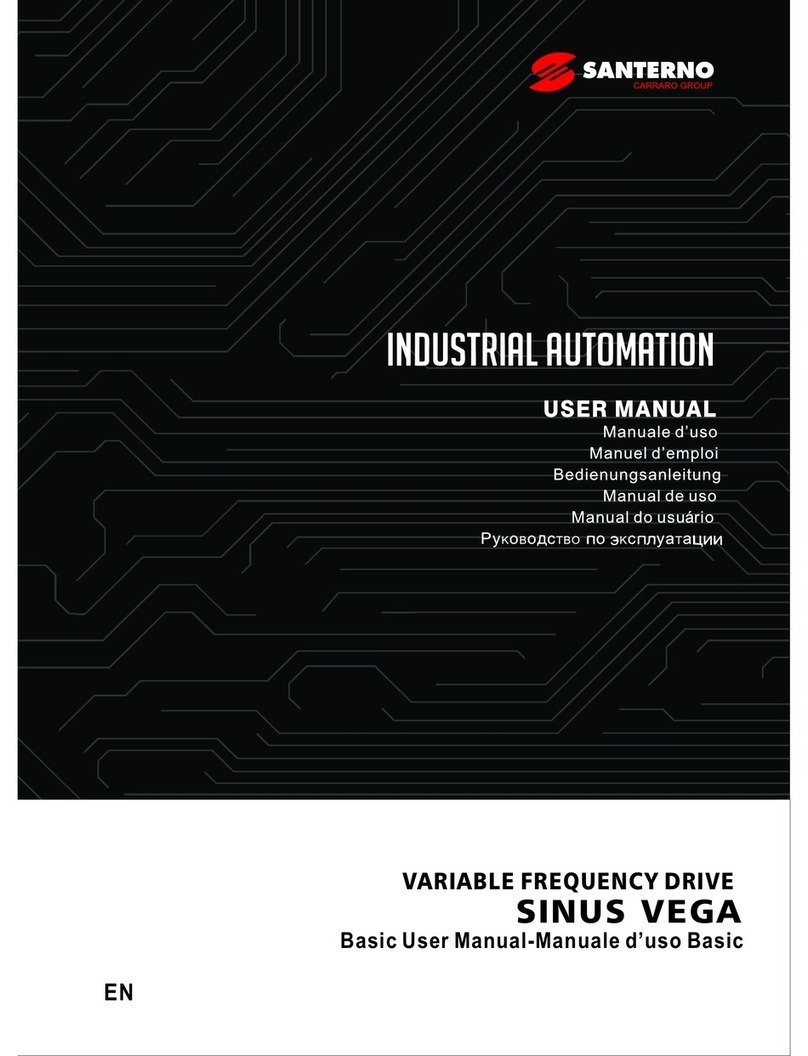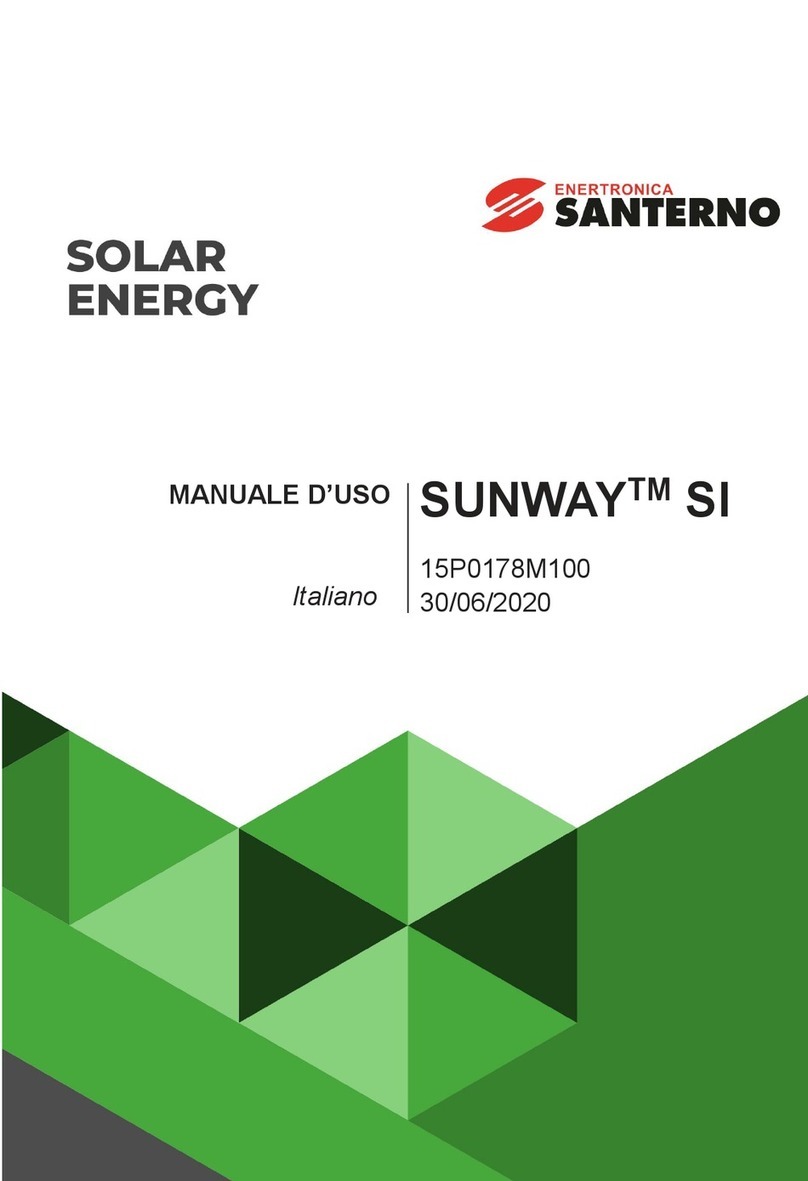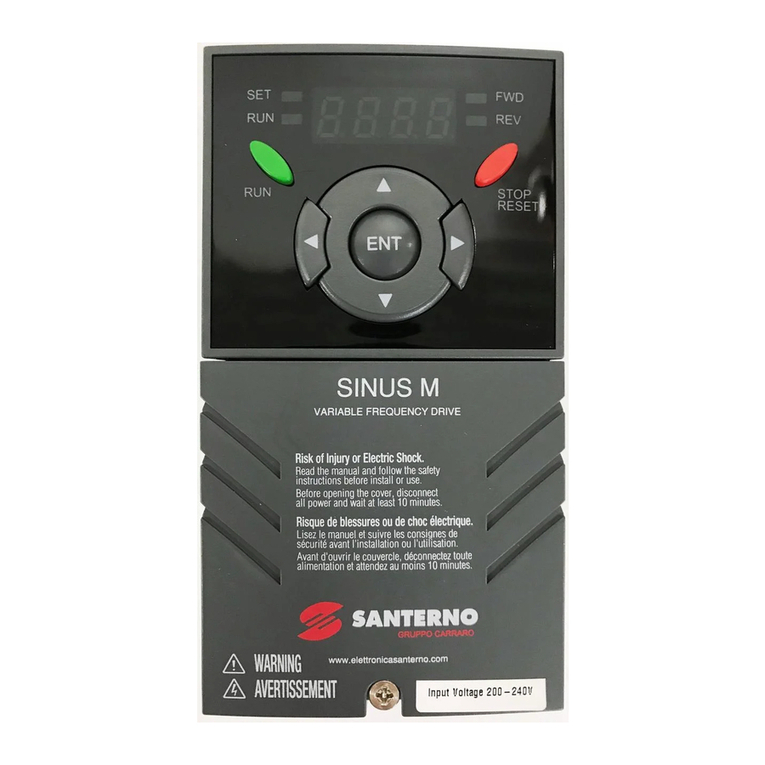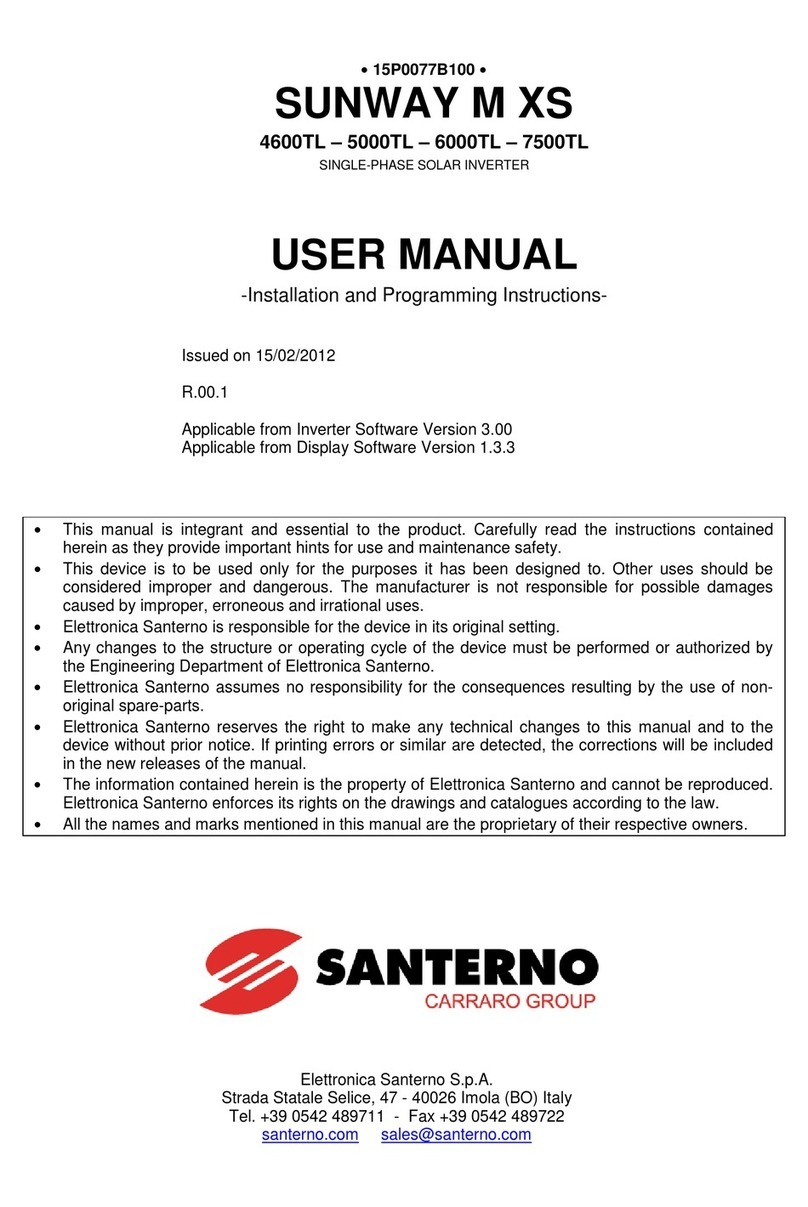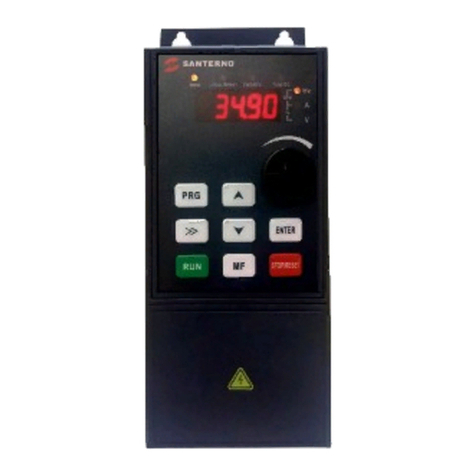8/139 Rev. 03 –01/06//2018
Index of Figures
Figure 1: SUNWAY TG TE OUTDOOR line................................................................................................ 12
Figure 2: Single-wire diagram of a standard SUNWAY TG TE inverter...................................................... 13
Figure 3: Block diagram............................................................................................................................... 14
Figure 4: System safety warning sign.......................................................................................................... 21
Figure 5: Wooden crates for the MODULAR SUNWAY TG TE inverter..................................................... 24
Figure 6: Controls on the front of the SUNWAY TG TE.............................................................................. 28
Figure 7: Interface Protection diagram........................................................................................................ 30
Figure 8: RUN LED on the display/keypad.................................................................................................. 31
Figure 9: Display/keypad............................................................................................................................. 32
Figure 10: Single-line diagram - dotted line highlighting the converter module .......................................... 35
Figure 11: Isolation Control Board ES942................................................................................................... 36
Figure 12: Accessing the ES942 board....................................................................................................... 36
Figure 13: Wooden crate for inverter shipment........................................................................................... 41
Figure 14: Wooden crate for inverter rooftop shipment............................................................................... 41
Figure 15: Inverter tilting.............................................................................................................................. 42
Figure 16: The inverter unpacked................................................................................................................ 43
Figure 17: Hoisting the inverter (TG1200 1000V TE, TG1800 1500V TE) ................................................. 44
Figure 18: Hoisting a 3-door inverter........................................................................................................... 45
Figure 19: Rooftop removed from the crate ................................................................................................ 46
Figure 20: Mounting the eyebolts to hoist the inverter rooftop.................................................................... 46
Figure 21: Removing the eyebolts and lifting brackets from the rooftop..................................................... 46
Figure 22: Mounting the fixing elements on the rooftop .............................................................................. 47
Figure 23: Placing the rooftop on the inverter ............................................................................................. 47
Figure 24: Fastening the rooftop to the inverter .......................................................................................... 48
Figure 25: Internal view of the SUNWAY TG TE inverter cabinet............................................................... 50
Figure 26: DC power cable inlet .................................................................................................................. 52
Figure 27: Earth cables inlet........................................................................................................................ 54
Figure 28: LV/MV Transformer connection ................................................................................................. 55
Figure 29: AC cable entry............................................................................................................................ 56
Figure 30: Location of the auxiliary power supply terminal board............................................................... 58
Figure 31: Removing the carter to access the boards in the converter....................................................... 60
Figure 32: Location of the digital input terminal board ................................................................................ 61
Figure 33: Environmental sensors and field I/Os Expansion Board............................................................ 65
Figure 34: Connection to 0 –10 V analogue input...................................................................................... 67
Figure 35: Connection to 0 –100 mV analogue input................................................................................. 68
Figure 36: Connection of 0 –20 mA (4 –20 mA) sensors to current inputs............................................... 68
Figure 37: Connection of the PT100 thermistor to the analogue channel................................................... 69
Figure 38: Data Logger option board .......................................................................................................... 69
Figure 39: Location of the Data Logger option board.................................................................................. 70
Figure 40: Ethernet cable path inside the converter.................................................................................... 71
Figure 41: Ethernet cable path inside the DC section................................................................................. 71
Figure 42: Serial link terminal board............................................................................................................ 72
Figure 43: Protective grilles reassembled ................................................................................................... 73
Figure 44: Communication port of the SUNWAY TG TE –basic version ................................................... 76
